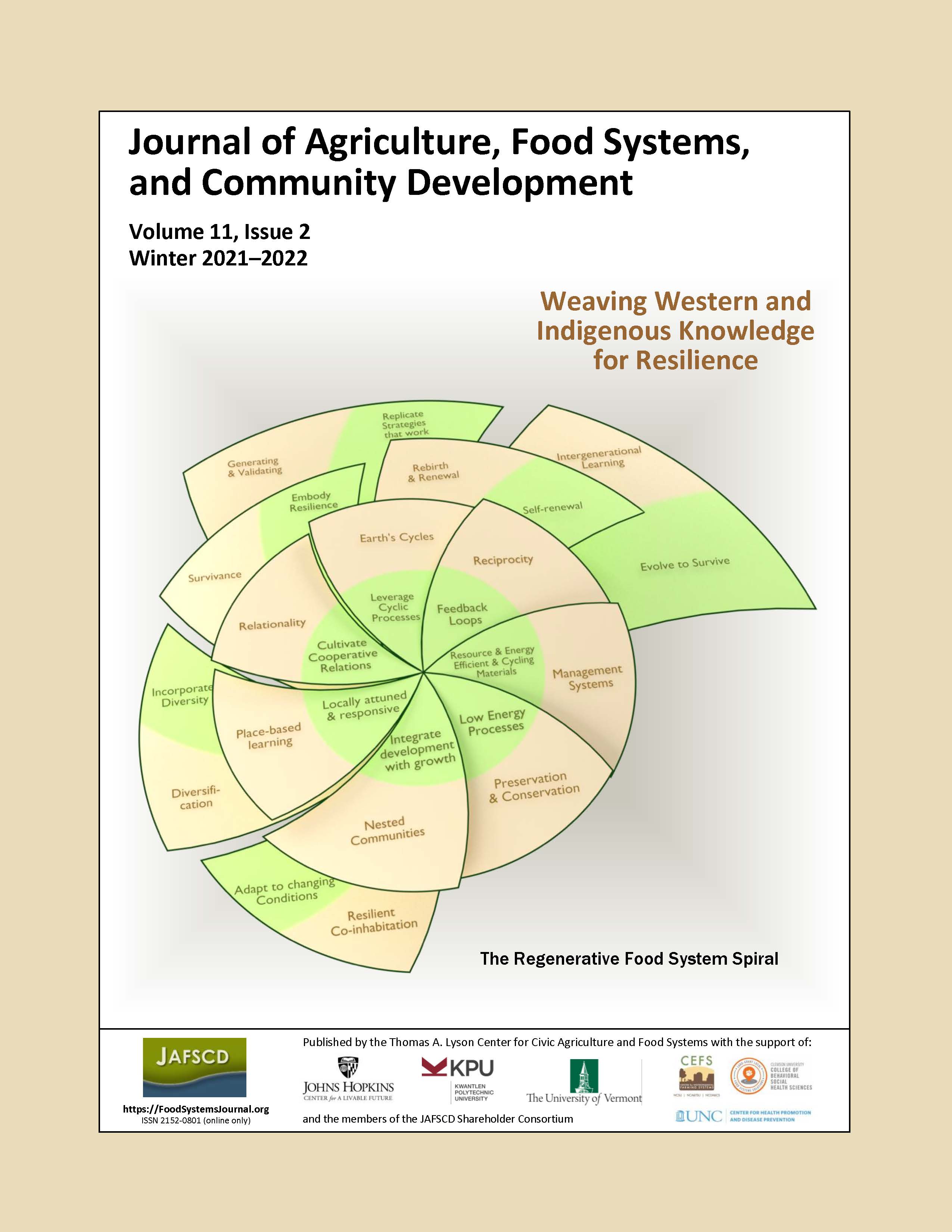Governance of risk management programs
Learning from Québec's Farm Income Stabilization Insurance program
DOI:
https://doi.org/10.5304/jafscd.2022.112.011
Keywords:
Stakeholder Participation, Agriculture Governance, Farm Income Stabilization Insurance, Assurance stabilisation des revenus agricolesAbstract
Involving stakeholders in program decision-making can support existing programs and reduce tensions against the state. However, to be involved, stakeholders may request specific mechanisms to influence program design or outcomes. This paper analyzes the design of four consultation mechanisms and the resultant stakeholder experiences in a provincial Canadian program called Farm Income Stabilization Insurance (FISI). The program offers a protection against low prices. The findings of this paper are based on 18 semi-structured interviews conducted with current and former participants familiar with the mechanisms. An analysis is accomplished through Arnstein’s ladder of citizen participation and Glasser’s choice theory. Results show that stakeholder representation can be improved by adequately designing consultation mechanisms and implementing specific actions. Recommended practices include separating political and technical discussions, asking a third party to take charge of the consultation mechanisms and prepare information, formally laying down recurrent mechanisms, and involving high-ranking individuals in the discussions.
Read the press release for this article.
Metrics
Downloads
Published
How to Cite
Issue
Section
License
Copyright (c) 2022 Frédérick Clerson

This work is licensed under a Creative Commons Attribution 4.0 International License.
The copyright to all content published in JAFSCD belongs to the author(s). It is licensed as CC BY 4.0. This license determines how you may reprint, copy, distribute, or otherwise share JAFSCD content.












